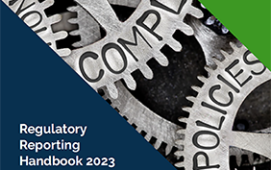
Indosuez Wealth Management, the global wealth management brand of Crédit Agricole Group, has become the first bank to adopt Bloomberg’s Rule Builder for automated ETF trading, following a pilot testing period. Rule Builder is a trade automation solution that covers fixed income, FX, equities, futures, and now ETFs. The system is designed to help traders automate vanilla low touch trades and administrative tasks, freeing up their time to focus on complex, high touch trades and strategic decision-making.
“There are clear benefits to automating ETF trading, as this type of operation is highly requested by our customers and part of our daily activities,” says Cyrille Nahabedian, head of capital markets solutions of Indosuez Wealth Management. “Since using Rule Builder, we have seen a significant increase in order flow, as well as a marked improvement in the quality of trade execution. To adapt the tool to our specific needs and those of our clients, an important step has been to work together with Bloomberg as they built the Rule Builder functionality. We are proud to be the first bank to benefit from this new service.”
“The ETF market has been growing rapidly and I suspect this trend will continue” says Ravi Sawhney, global head of trade automation and analytics at Bloomberg. “Naturally, the fund managers who provide ETFs to their end investors are looking for ways to become more efficient in how they scale their expanding business and automation provides an excellent way to achieve this. So it was a natural extension for us to expand Rule Builder for ETFs to service this community.”
Using Rule Builder will allow Indosuez traders to use a no-code solution to break down incoming ETF order flow into ‘high’ and ‘low’ touch, where traders can set rules for low touch orders to be executed on Bloomberg venues without additional manual intervention.
“In terms of the mechanics, first of all you’ve got to decide which orders are low touch and thus OK to automate. And that might be down to a number of attributes, such as order size, volatility, or special condition codes on the order itself from the PM,” says Sawhney. “The next step is to pick the brokers that you want to put in competition, and depending on the ETF type, clients may have preference lists. Once the RFQ is sent, prices come back, Rule Builder evaluates those prices, and then determines if they fall within the criteria specified. If it does the price is automatically accepted and the trade completes with zero trader intervention.”
Rule Builder uses real-time and historical analytics to help traders more systematically decide which dealers receive RFQs and at what level to execute against, which also helps clients such as Indosuez comply with best execution policies.
“Historically you might be looking at the performance of brokers against defined quality measures over a period of time, for example, in terms of being most available or providing the best prices,” says Sawhney. “Rule Builder also analyses real time data coming back from the dealers pricing the RFQ, in order to decide whether to execute or not.”
Other conditions can also be built in, says Sawhney. “You can look at various composite rates that we provide access to on the terminal, to see what is the best price within a certain composite. And we’re investing in getting more data into the system, to allow traders to start writing more complex rules and automating larger size orders. They can write rules, change rules, share rules, turn them on and off, all real time through the Bloomberg terminal interface. So the trader is always in control. And that’s a key premise with automation.”
Subscribe to our newsletter




